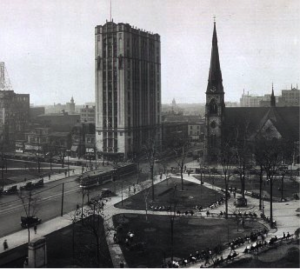
America’s self image, forged in the era of Thomas Jefferson’s yeoman farmers, is of a rural nation. The great landscape of the West often dominates popular culture and Americans imagine themselves as independent and self-sufficient, shaped by the western frontier. Yet there is also a long urban tradition in the United States that has equally shaped the development of American culture. The rise of the great metropolis in the late 19th century was due to the existence of enormous wealth in the cities, built upon industrialism and immigration. In the early 20th century, cities were the acknowledged center of American life. This perception shifted after World War II when middle-class Americans began fleeing cities for the suburbs. The resulting debates over the vibrancy and usefulness of the city continue to this day. This rise and fall of the urban center is intimately related to the experience of America in the 20th century. The following primary source set contains primary and secondary source documents accompanied by annotations and questions, classroom activities, and relevant standards.
Download:


